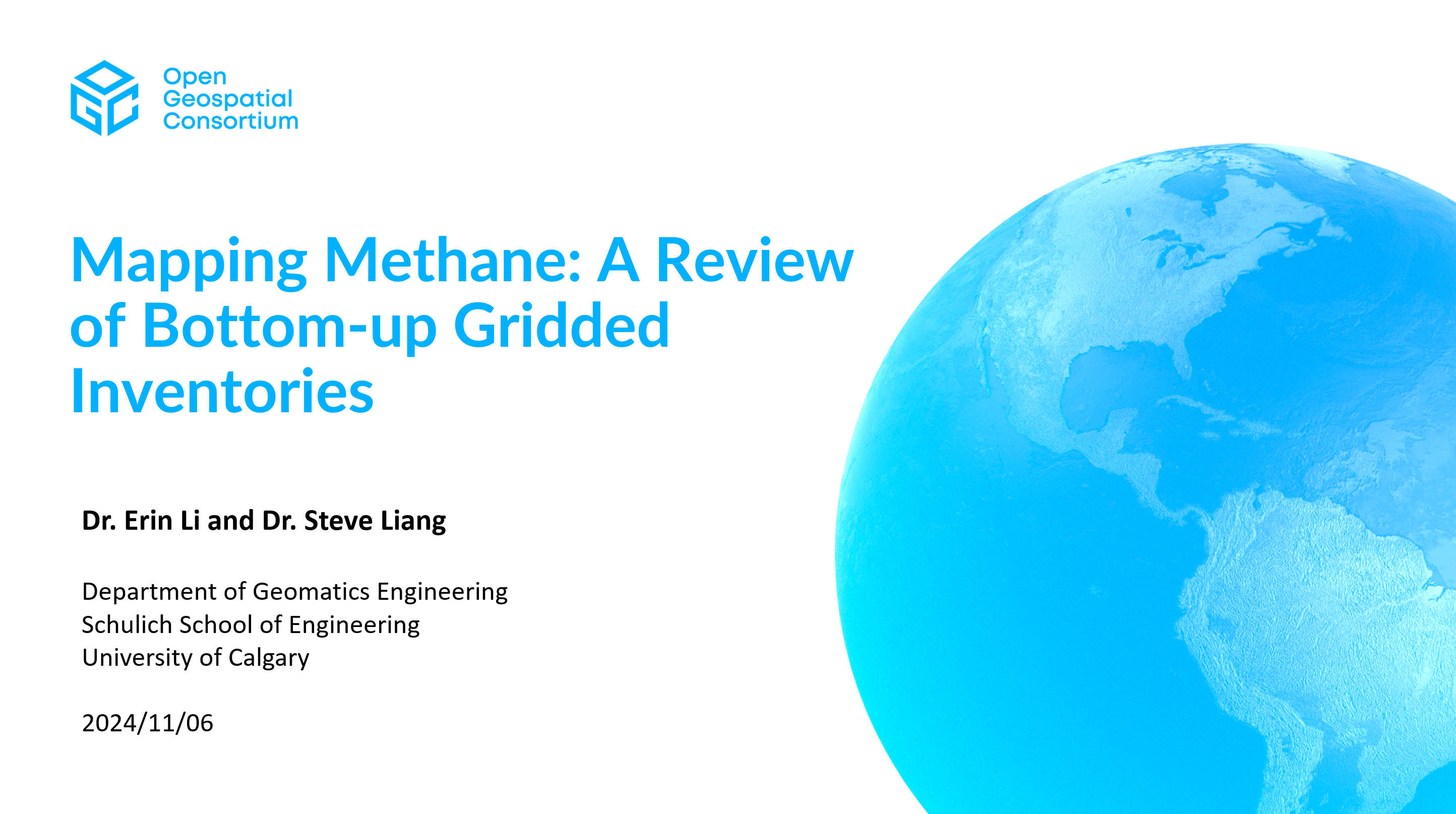
I presented our review titled Mapping Methane: A Review of Bottom-up Gridded Inventories at the 130th OGC Member Meeting held online in November 2024. The presentation provided an overview of the current landscape of bottom-up methane gridded inventories and emphasized the need for improvements in spatial representation and accuracy.
Why Gridded Inventories Matter
Gridded methane inventories are essential for supporting inverse atmospheric analyses, simulating high-emission events, refining local emission estimates, and communicating data to broad audiences. They provide spatial continuity across jurisdictions and enable more intuitive data visualization and comparison.
Review of Existing Inventories
We examined several global, national, and regional inventories:
Global examples:
EDGAR (Emissions Database for Global Atmospheric Research) and Scarpelli’s global inventory both provide emissions at a 0.1° × 0.1° resolution using IPCC Tier 1 methods and spatial proxies to downscale national data.
National examples:
The U.S. gridded inventory by Maasakkers et al. (2023) aligns with the EPA GHGI and includes uncertainty estimates. Other countries with national-scale gridded inventories include Canada, Mexico, Australia, and Switzerland.
Regional examples:
Inventories developed for California and the Barnett Shale region in Texas demonstrate how regional emission maps can incorporate high-resolution activity data, aircraft measurements, or Monte Carlo simulations to capture site-specific variations.
Key Limitations of Current Grids
Several limitations were highlighted:
- Graticule-based issues: Unequal grid sizes introduce biases in area-based comparisons and contribute to inaccurate spatial attribution, especially in polar regions.
- Spatial misallocations: Emissions are sometimes placed in incorrect regions, such as urban areas rather than oil and gas fields.
- Magnitude underestimation: Coarse-resolution data often underestimate true emissions, which then propagate through downscaling procedures.
Toward Better Inventories
To address these shortcomings:
- Use of Discrete Global Grid Systems (DGGS): DGGS ensures equal-area grids and enables robust spatial comparisons at various resolutions.
- Improved source attribution: Integrating activity and emissions data at their native resolution can prevent misallocations.
- More representative emission factors: Incorporating better emission factor data and activity metrics can reduce underestimation biases.
Take Home Messages
- High-quality gridded methane inventories are crucial for both scientific and policy applications.
- Current inventories, while valuable, have known limitations in spatial consistency and emission accuracy.
- Moving toward DGGS-based or otherwise spatially consistent frameworks could significantly improve the quality and utility of future methane inventories.
Thanks to the Open Geospatial Consortium for the opportunity to present and discuss this work.